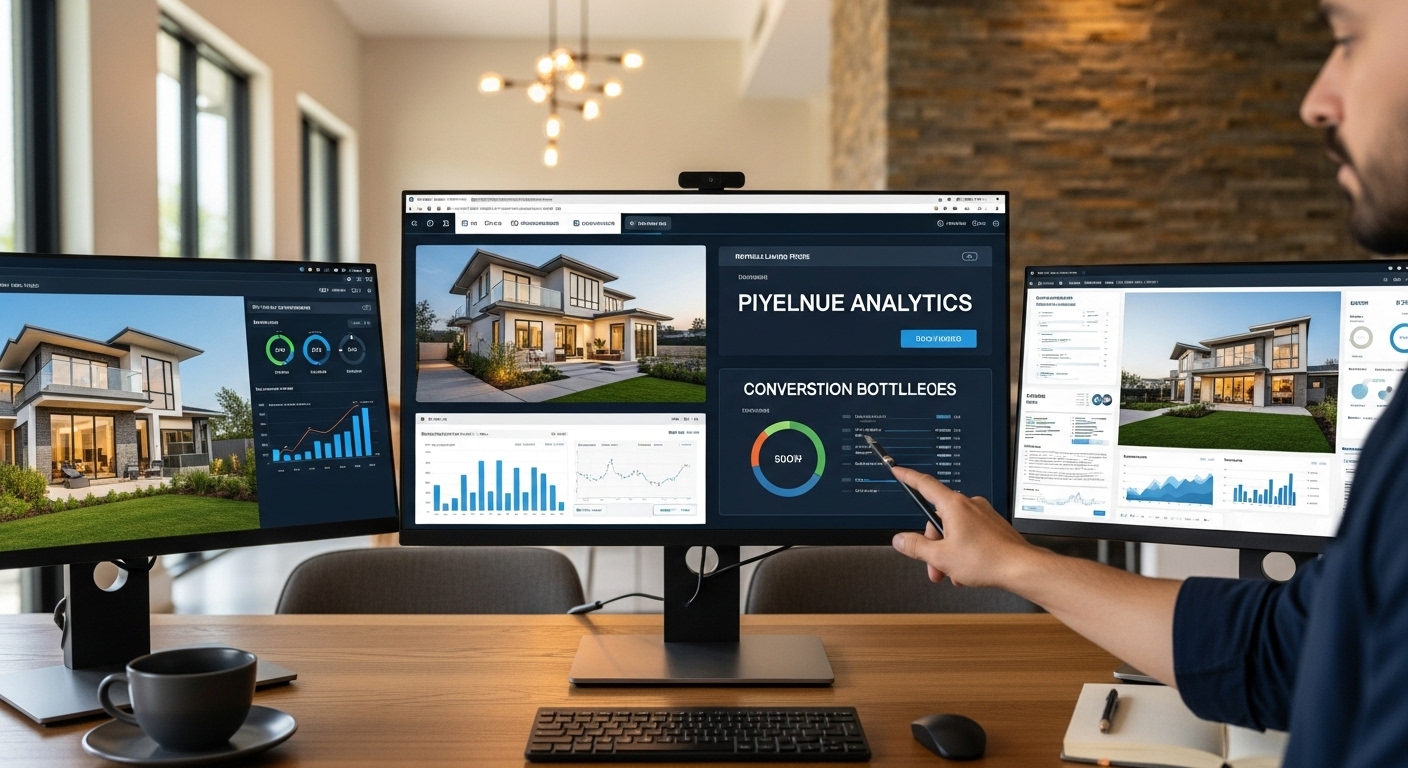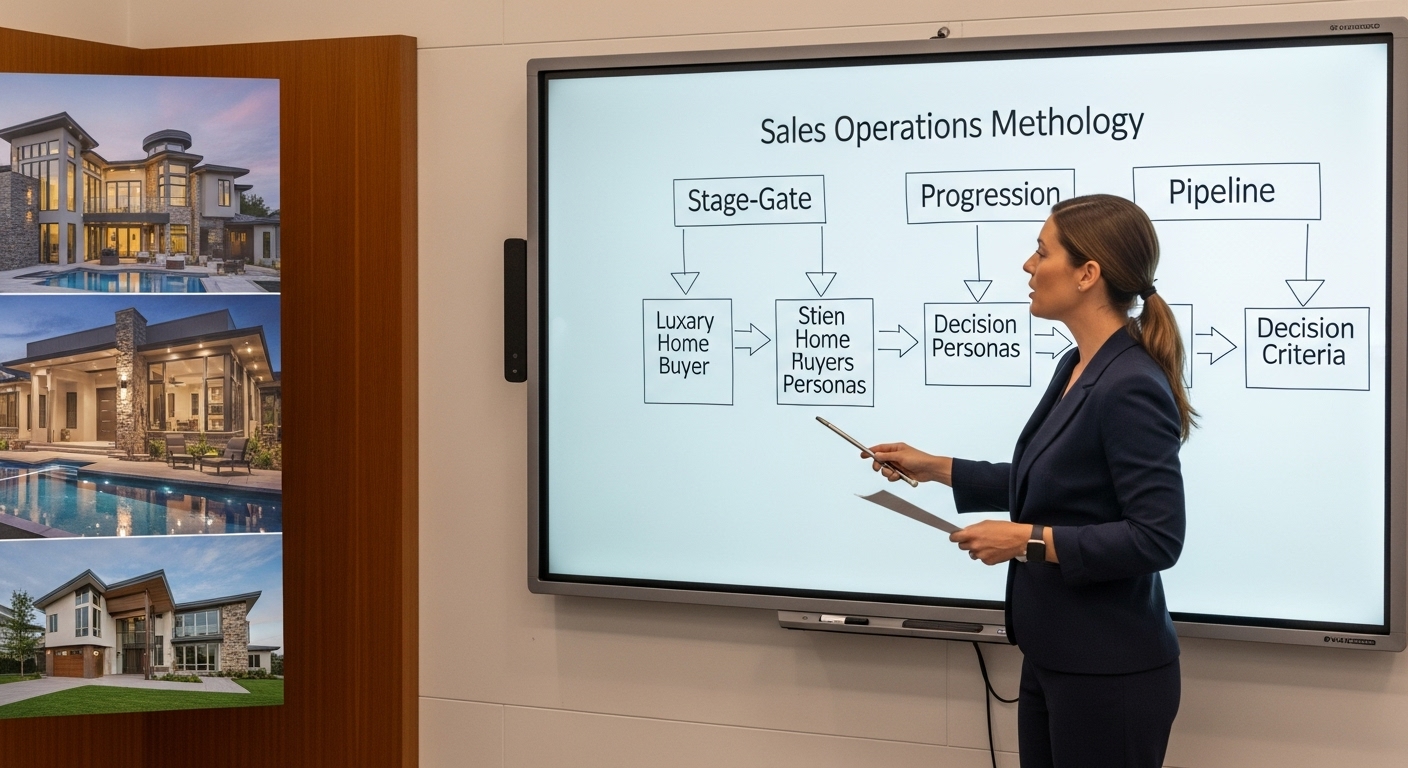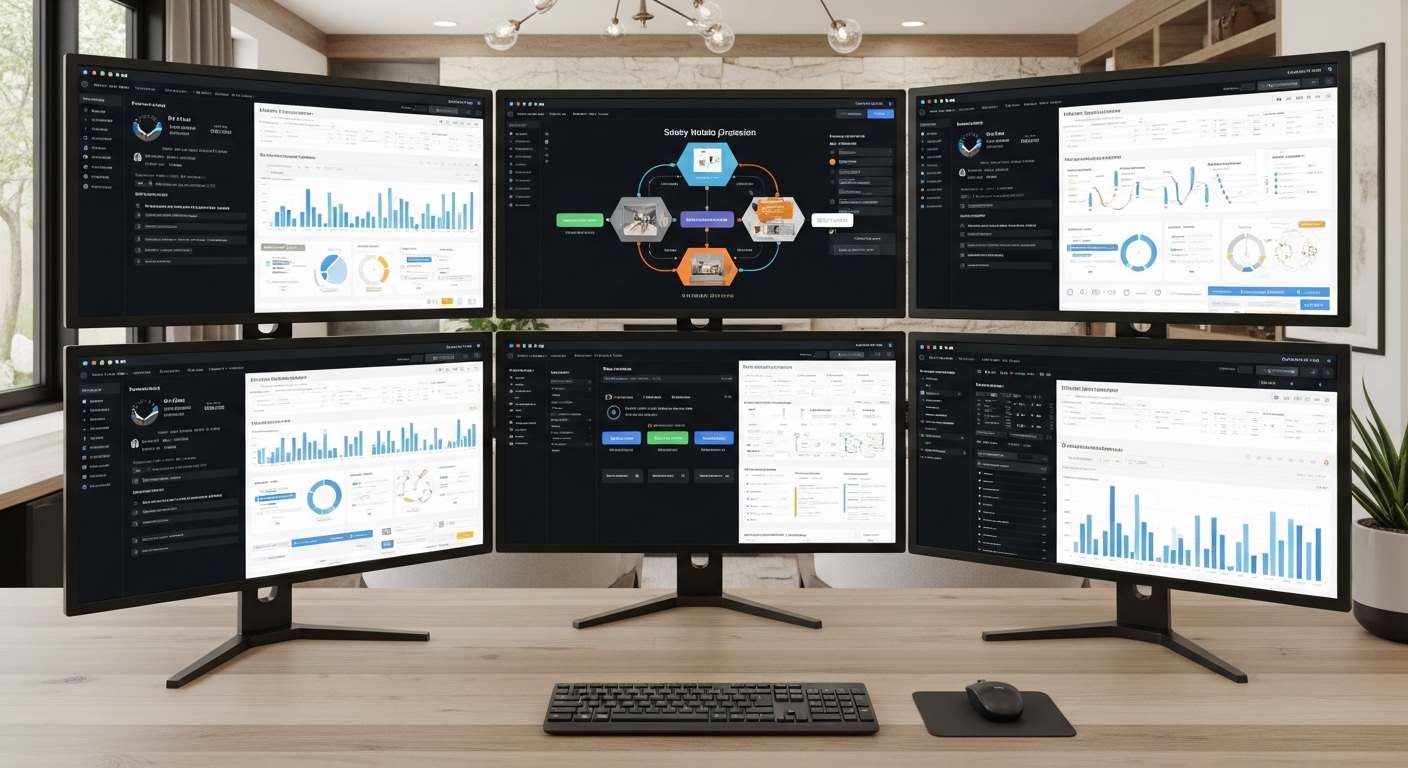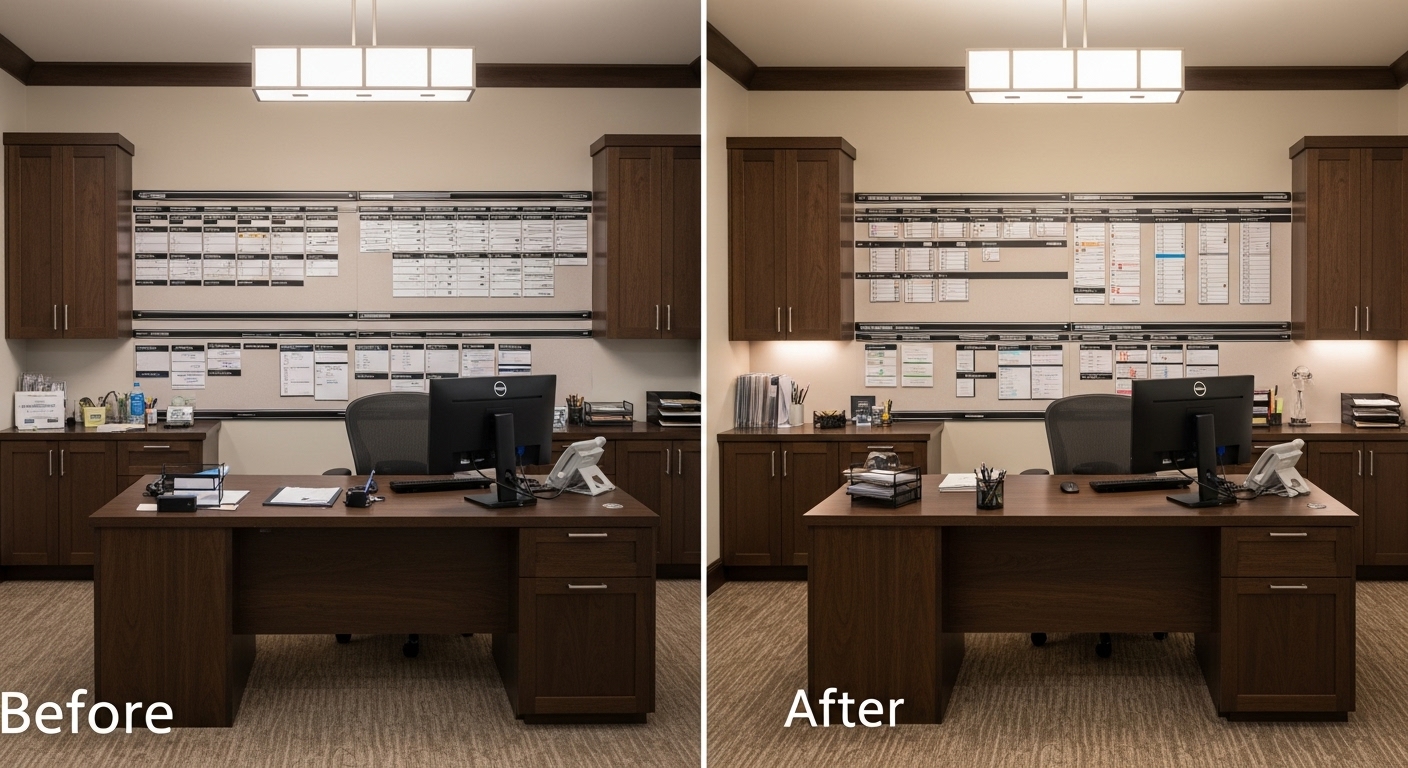August 11, 2025 by 100XBuilds Team
Pipeline Management: Systematic Approach to Sales Velocity

A luxury home builder in Austin increased their sales velocity by 47% and shortened their average sales cycle from 8.2 months to 4.6 months using systematic pipeline management. The result? An additional $3.2M in closed revenue within 12 months, simply by implementing structured processes that most builders ignore.
Your pipeline isn't just a CRM dashboard—it's your revenue engine. Yet 73% of luxury builders operate with broken pipeline systems that leak prospects, stall deals, and crush sales velocity. The builders who master systematic pipeline management don't just close more deals; they close them faster and at higher margins.
The Hidden Cost of Pipeline Chaos
Most luxury builders think they understand their sales process. They track leads, follow up with prospects, and eventually close deals. But beneath this surface-level activity lies a chaotic mess that's costing you millions.
Pipeline leakage occurs at every stage when you lack systematic processes. A $50M luxury builder typically loses 34% of qualified prospects due to poor pipeline management—that's $17M in potential revenue walking out the door annually.

The symptoms are everywhere:
Deals stalling in limbo: Prospects disappear for weeks without clear next steps
Inconsistent follow-up: Some leads get called 12 times while others get forgotten
Pricing confusion: Multiple versions of proposals floating around with different numbers
Timeline uncertainty: No one knows when deals will actually close
Resource waste: Sales team spinning wheels on dead deals while hot prospects go cold
The Sales Velocity Formula That Changes Everything
Sales velocity isn't just about closing more deals—it's about accelerating the entire revenue generation process. The formula is deceptively simple:
Sales Velocity = (Number of Opportunities × Average Deal Value × Win Rate) ÷ Sales Cycle Length
A systematic approach attacks all four variables simultaneously. When that Austin builder implemented structured pipeline management, here's what happened:
Opportunities increased 23% through better lead qualification and nurturing
Average deal value rose 12% via strategic upselling at defined pipeline stages
Win rate improved 18% with consistent processes and better prospect education
Sales cycle shortened 44% by eliminating bottlenecks and accelerating decisions
The compound effect? Sales velocity increased 47%, generating an additional $3.2M in annual revenue.
Stage-Gate Methodology: Your Pipeline Foundation
The most successful luxury builders use a stage-gate methodology that treats each pipeline stage as a checkpoint with specific entry and exit criteria. This isn't about adding bureaucracy—it's about creating predictable revenue flow.

Stage 1: Initial Interest (Days 1-7)
Entry Criteria: Qualified lead with genuine buying intent and budget alignment
Activities: Discovery call, needs assessment, initial home style preferences
Exit Criteria: Confirmed timeline, budget range, and decision-making process
Success Metric: 72% of qualified leads advance to Stage 2 within 7 days
Stage 2: Design Consultation (Days 8-21)
Entry Criteria: Completed needs assessment with clear project scope
Activities: Site visit, preliminary design concepts, budget refinement
Exit Criteria: Approved design direction and detailed project timeline
Success Metric: 58% advance to proposal stage within 14 days
Stage 3: Proposal Development (Days 22-35)
Entry Criteria: Finalized design concepts and specifications
Activities: Detailed cost analysis, contract preparation, financing options
Exit Criteria: Formal proposal presentation scheduled
Success Metric: 89% of proposals presented within 14 days of stage entry
Stage 4: Negotiation & Close (Days 36-49)
Entry Criteria: Proposal presented with clear next steps defined
Activities: Contract negotiations, final adjustments, closing coordination
Exit Criteria: Signed contract and construction timeline confirmed
Success Metric: 67% close rate with average 13-day negotiation period
Velocity Accelerators: The 80/20 of Pipeline Management
While every aspect of pipeline management matters, certain activities drive disproportionate results. Focus your energy on these velocity accelerators:
Qualification Intensity
Spend 3x more time qualifying prospects upfront. A luxury builder in Denver discovered that prospects who completed their comprehensive qualification process had an 84% close rate versus 31% for those who didn't.
The 15-Minute Qualification Call:
Budget verification: "What investment range are you comfortable with for this project?"
Timeline confirmation: "When do you need to be in your new home?"
Decision authority: "Who else will be involved in the final decision?"
Motivation assessment: "What's driving this decision to build now?"
Competition awareness: "What other builders are you considering?"

Momentum Maintenance
Every interaction must advance the deal or it's wasting velocity. Implement the "Next Step Rule"—every conversation ends with a specific next action, timeline, and responsible party.
Instead of: "I'll follow up with you next week"
Use: "I'll send the updated floor plans by Thursday at 2 PM, and we'll review them together on Friday at 10 AM. Does that work for your schedule?"
Objection Anticipation
Map common objections to each pipeline stage and prepare systematic responses. The most successful builders address objections before prospects raise them.
Stage 2 Common Objection: "The timeline seems too long"
Systematic Response: "I understand timeline is crucial. Let me show you our construction schedule optimization process that's helped us complete similar projects 23% faster than industry average while maintaining our quality standards."
Technology Stack for Pipeline Acceleration
Your CRM is just the foundation. Velocity-focused builders layer additional tools that automate routine tasks and provide predictive insights.
Essential Pipeline Technology:
CRM with pipeline automation: HubSpot or Salesforce configured for construction workflows
Proposal automation: Tools like PandaDoc that generate proposals from templates
Communication sequencing: Automated follow-up sequences triggered by pipeline stage changes
Analytics dashboard: Real-time visibility into pipeline health and velocity metrics
Document management: Centralized storage for all prospect communications and documents

A $75M builder in Phoenix implemented this technology stack and reduced administrative time by 34%, allowing their sales team to focus on high-value activities that directly impact velocity.
Measuring What Matters: Velocity Metrics
Most builders track lagging indicators like monthly sales. Velocity-focused builders monitor leading indicators that predict future performance.
Critical Velocity Metrics:
Stage progression rate: Percentage of deals advancing between stages monthly
Stage duration: Average time spent in each pipeline stage
Pipeline coverage: Ratio of pipeline value to monthly sales targets (should be 3:1 minimum)
Velocity by source: Which lead sources generate fastest-moving opportunities
Bottleneck identification: Which stages consistently slow deal progression
Win rate by stage: Conversion percentages at each pipeline checkpoint
Weekly Pipeline Review Protocol
Every Monday at 9 AM, conduct a 30-minute pipeline review focusing on:
Stalled deals: Any opportunity unchanged for 14+ days gets immediate attention
At-risk opportunities: Deals approaching stage duration limits
Acceleration opportunities: High-value prospects ready for stage advancement
Resource allocation: Ensuring sales team focuses on highest-velocity activities
Common Pipeline Killers and Solutions
Even well-intentioned builders sabotage their pipeline velocity through predictable mistakes. Here are the most common killers and their systematic solutions:
Pipeline Killer #1: Weak Qualification
Problem: Accepting any interested prospect into your pipeline
Solution: Implement BANT+ qualification (Budget, Authority, Need, Timeline + Motivation)
Result: 43% improvement in close rates by focusing only on qualified opportunities
Pipeline Killer #2: Inconsistent Follow-up
Problem: Random, personality-driven communication patterns
Solution: Automated sequences with personal touches at defined intervals
Result: 67% reduction in prospect drop-off between stages
Pipeline Killer #3: Proposal Delays
Problem: Taking weeks to deliver proposals while prospects lose momentum
Solution: Template-based proposal system with 48-hour delivery standard
Result: 29% increase in proposal acceptance rates

Pipeline Killer #4: Price Shock
Problem: Revealing pricing only at proposal stage, causing late-stage objections
Solution: Progressive price education throughout pipeline stages
Result: 52% reduction in price-related deal losses
Pipeline Killer #5: Decision Paralysis
Problem: Overwhelming prospects with too many choices simultaneously
Solution: Structured decision-making process with limited options per stage
Result: 38% faster decision-making and higher satisfaction scores
Implementation Roadmap: 90-Day Pipeline Transformation
Systematic pipeline management isn't implemented overnight. Follow this proven 90-day roadmap used by successful luxury builders:
Days 1-30: Foundation Building
Week 1: Audit current pipeline and identify leakage points
Week 2: Define stage-gate criteria and success metrics
Week 3: Configure CRM and automation tools
Week 4: Train team on new processes and begin implementation
Days 31-60: Process Refinement
Week 5-6: Monitor initial results and adjust stage criteria
Week 7-8: Optimize automation sequences based on prospect feedback
Days 61-90: Velocity Optimization
Week 9-10: Analyze velocity metrics and identify acceleration opportunities
Week 11-12: Fine-tune processes and establish ongoing improvement protocols
The Compound Effect of Systematic Pipeline Management
When you implement systematic pipeline management, the benefits compound over time. That Austin builder didn't just see immediate results—their velocity continued improving:
Month 6: Sales velocity increased 47%
Month 12: Additional 23% improvement as processes matured
Month 18: Team productivity up 34% with same headcount
Month 24: Pipeline predictability enabled strategic growth planning
The systematic approach creates a self-reinforcing cycle: better processes generate more predictable results, which enable better resource allocation, which improves processes further.
Your pipeline is either accelerating your growth or constraining it. There's no middle ground in today's competitive luxury market. Builders who master systematic pipeline management don't just survive—they dominate their markets while competitors struggle with unpredictable revenue.
The question isn't whether you need systematic pipeline management. The question is how much revenue you're willing to lose while your competitors implement it first.
Ready to accelerate your sales velocity and shorten your sales cycle? Contact 100XBuilds today for a comprehensive pipeline audit and customized implementation strategy. We'll show you exactly where your pipeline is leaking revenue and how to plug those gaps systematically. Your competitors are already implementing these strategies—don't let them capture the market while you're still managing deals on spreadsheets.
